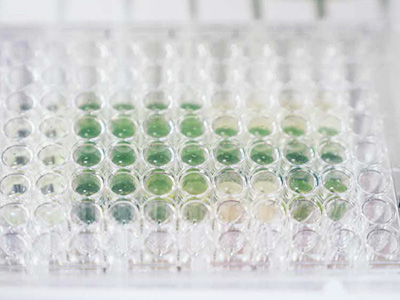

Despite the vast amounts of algae that exist in nature, only about 30 species have been used industrially so far. The rest of the diverse pool of microalgal resources have not yet been fully utilized.
Some algae boast a protein content of 70%†2 that exceeds that of soybean (33.8%)†1 and sesame beans (21.7%)†1, which are usually used for vegetable proteins. Algae can also produce up to 70% lipid †2 under certain culture conditions, a promising alternative to sesame (54% lipid)†1 and rapeseed (50% lipid) †2 vegetable oils.
Many algae can be used as alternative sources of proteins and raw materials for biofuel. To maximize the benefits of various algae resources, the most suitable algae strain for a targeted purpose should be first selected or screened.
From our extensive algae library, we screen strains that are suitable for the target purpose in terms of growth, protein content, lipid content, color and other valuable parameters.
In order to screen numerous algae strains, we developed a new highly efficient method †3 using optical instruments such as plate readers and cells sorters.
Our algae library contain strains that have been bred by heavy ion irradiation. Among such strains are those with enhanced lipid storage capacities.
As we enter the age of life expectancy reaching up to a 100 years, more and more people are becoming interested in healthy lifestyles and prolonged life. We screen and identify algae and their functional components that are beneficial to human health.
†1 日本食品標準成分表2020年版 †2 E.W.Becker(2017) †3 Cytologia, 80, 475-481, (2015) DOI: https://doi.org/10.1508/cytologia.80.475